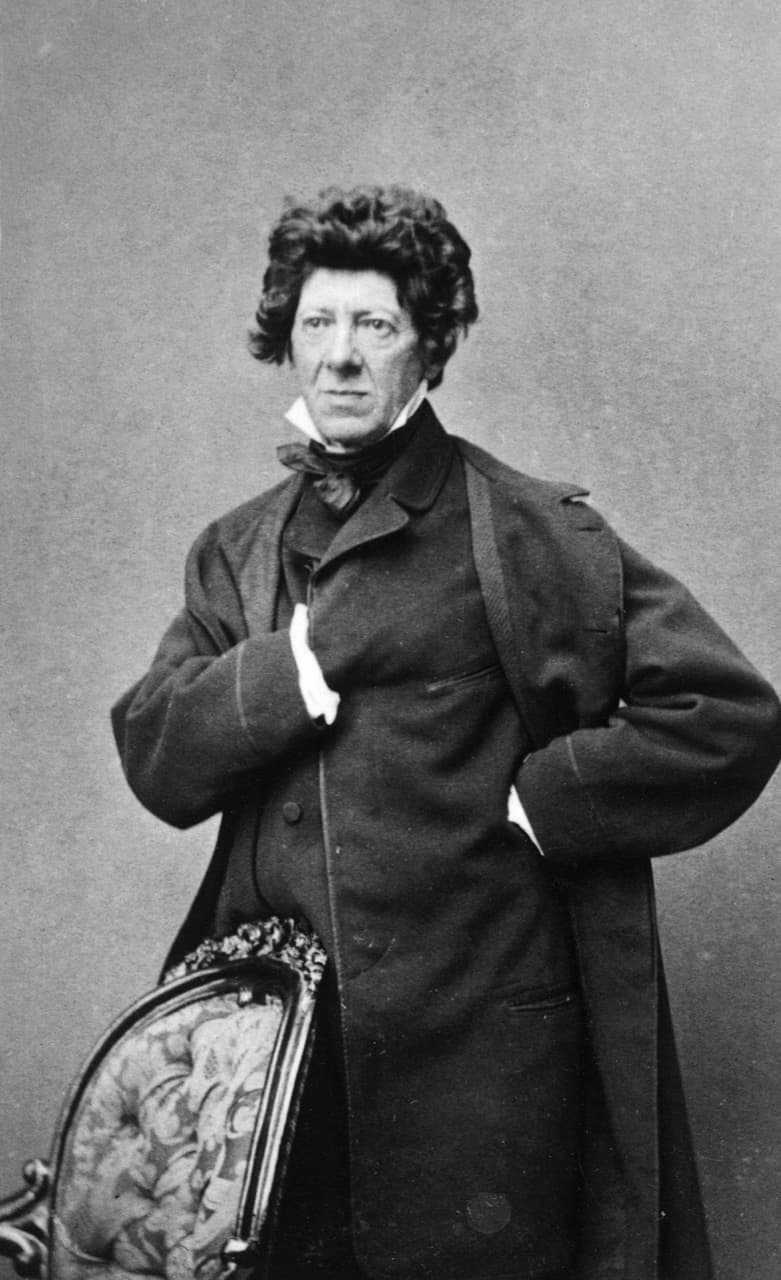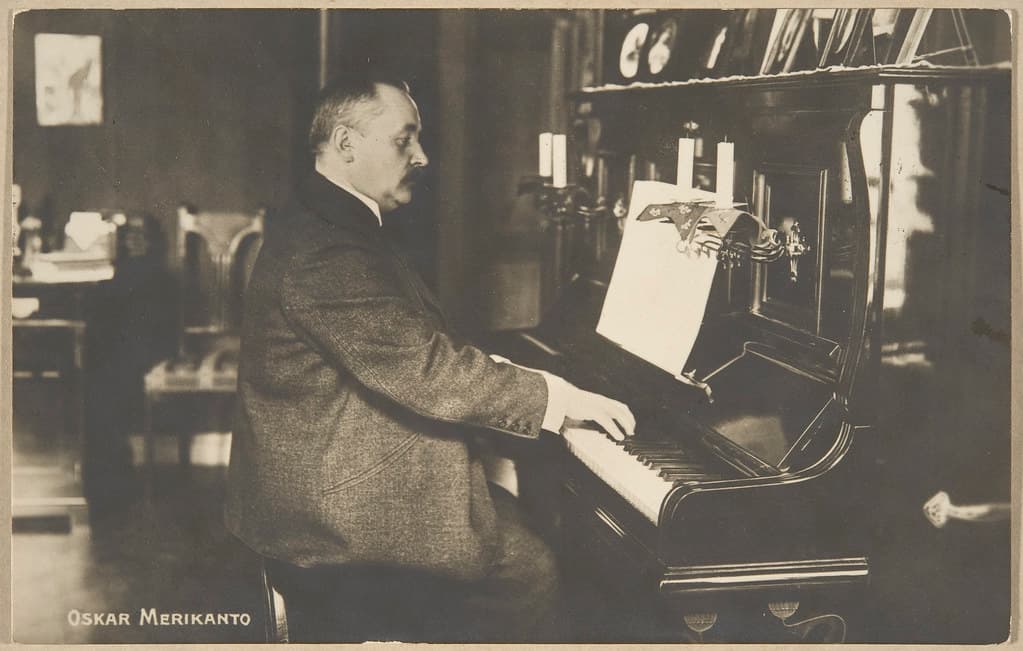Finland declared its independence after the Russian Revolution in 1917. Finland had been ruled by Sweden since the late thirteenth century, but in 1908, Finland became part of the Russian Empire as the autonomous Grand Duchy. Prior to this, in the 19th century, Finland began to experience a burgeoning national awareness. As a result, Finnish composers started to display this national identity through their music. As such, Fredrik Pacius, Oskar Merikanto, and Jean Sibelius became representatives of Finnish national composers. Like other national composers in other countries, Finnish national composers aimed to share their nation’s culture, language, and Finnish landscape. Their different compositional approaches and styles exhibited a manifold of the characteristics of Finnish music.
Fredrik Pacius: “Godfather of Finland’s Flourishing Musical Life”

Fredrik Pacius
Proclaimed the first National composer in Finland, Fredrik Pacius (1809-1891) was initially born in Hamburg. Without consideration for his German heritage, his contributions to Finland’s musical world elevated him to the “godfather of Finland’s flourishing musical life.” Such contributions included his compositions and his professional influence on the music industry in Finland. Finland’s national anthem, Vårt land, was composed by Pacius in 1848. His opera drama Kung Karls jakt (1852), utilizing the Finnish folk instrument, the kantele, in collaboration with standard orchestral instruments, was the first Finnish opera staged in Helsinki. The opera received national praise even though it was sung in Swedish.
Fredrik Pacius: The Hunt of King Charles (Kaarle Kuninkann Metsastys – Act I Scene 1: Overture (Pori Sinfonietta; Ari Rasilainen, cond.)
Metropolian oopperaproduktio Kung Karls Jakt 2019
Pacius’ contributions to Finnish music included recruiting musicians and friends to perform with him in Finland, which brought more attention to Finland’s music industry. As such, he employed German professional musicians to serve in the Philharmonic in Finland. Due to their friendship, violinist Johan A. Beer and his cellist son performed in Helsinki. Beer also brought the St. Petersburg Court Orchestra’s choir to Helsinki to give performances. Consequently, Helsinki began gaining international notoriety. As a result of this notoriety, more German opera companies performed in Helsinki from the mid-19th century on.
Fredrik Pacius: Variations on Studenter äro muntra bröder (Sebastian Silén, violin; Martin Malmgren, piano)
Oskar Merikanto: Spiritual Connection With Finland’s Ordinary People Through Music

Oskar Merikanto
Oskar Merikanto (1868-1924) and Jean Sibelius (1865-1957) began their careers when Finnish culture underwent dramatic changes. Merikanto’s active career as a performer and composer primarily came to fruition in Finland. He performed widely as a pianist, a piano accompanist, an organist, and as a conductor. His reputation as a Finnish composer is due to the fact that his music provided a spiritual connection with Finland’s ordinary people. He emphasized his national background in his music through his romantic and melodic style. The language of his songs was educational in that the poems he mainly chose included moral and instructive messages.
Additionally, his sentimental style blended Italian, German, and Russian qualities into his music while the language was written in Finnish. Similar to Pacius, he also evoked the Finnish spirit of Kalevala in his songs, as well as in his operas. The Maid of the North (1898) and Elinan Surma (1910) were his first and second operas. Both were written in Finnish and adopted Finnish folk elements by putting a Kalevala singing part in the first opera and a Finnish folk poem in the second.
Oskar Merikanto: Pohjan neiti (The Maid of the North): Louhi ylistaa (Laura Pyrro, soprano; Jouni Somero, piano)
Oskar Merikanto: Elinan surma – Mä tiedän (Klaus Kurki, Kirsti Fleming)
Jean Sibelius: Finland’s Landscape and Poetry Kalevala as the Inspirations

Jean Sibelius
Kalevala’s influence on Sibelius’ music made him known as a national composer in Finland. The epic Kalevala also appears frequently in Sibelius’ music. The Kullervo (1892), inspired by the heroic image in Kalevala, is proclaimed as the “birth of Finnish music.” A meter of five-four is employed, which is symbolic of the Kalevala meter in Finland. The Swan of Tuonela and Lemminkäinen’s Homecoming from Lemminkäinen Suite Op. 22 (1901) serve as examples of Kalevala’s influence on Sibelius’ work through the creation of spaciousness and dramatic effects. The Kalevala also attributes to Karelia Suite and Overture, Op.11. This composition is an orchestral piece published in 1906.
Jean Sibelius: The Kullervo
The Swan of Tuonela from Lemminkäinen Suite Op. 22
Additionally, Sibelius’ love of Finland’s landscape is also expressed in his music, especially in his symphonic poems and symphonies. His symphonic poem, Finlandia, describes different episodes in Finland’s history and evokes a national identity within Finnish culture. The Finlandia Hymn remains one of the most important national songs of Finland today; the melody of the hymn is frequently heard in different events in modern-day Finland, including in church services and national ceremonies.
Jean Sibelius: Karelia Suite
Sibelius’ symphonic works afforded him international fame. These works not only show his talents in orchestration but also promote notions of challenging conventional settings of symphonic genres. For instance, the Kullervo is a symphonic poem with five movements as opposed to the single-movement tradition of symphonic poems. Sibelius also made use of subtle ambiguities, confusing and surprising the audience. In the opening of Finlandia, the audience is not given any clues regarding the meter of the tremolo bass and extended chords. Ambiguities are also found in his 5th Symphony, as heard in the overlaps between the first and the second movement. Moreover, toward the end of the last movement, he uses silence and a repeated dominant chord to create confusion for the audience before finally bringing it to its conclusion.
Jean Sibelius: Finlandia, Op. 26 (BBC National Orchestra of Wales; Thomas Søndergård, cond.)
Finnish musical identity existed primarily due to the influences of the epic Kalevala, the Finnish language, poems, folk elements, instruments, and the power of Finland’s landscape. Through their music’s innovative and influential components, Fredrik Pacius, Oskar Merikanto, and Jean Sibelius inspired change within Finland’s music industry and within Finland itself. Their efforts contributed to forming a distinct notion of Finnish national identity in music while also earning Finland international acclaim.
For more of the best in classical music, sign up to our E-Newsletter



